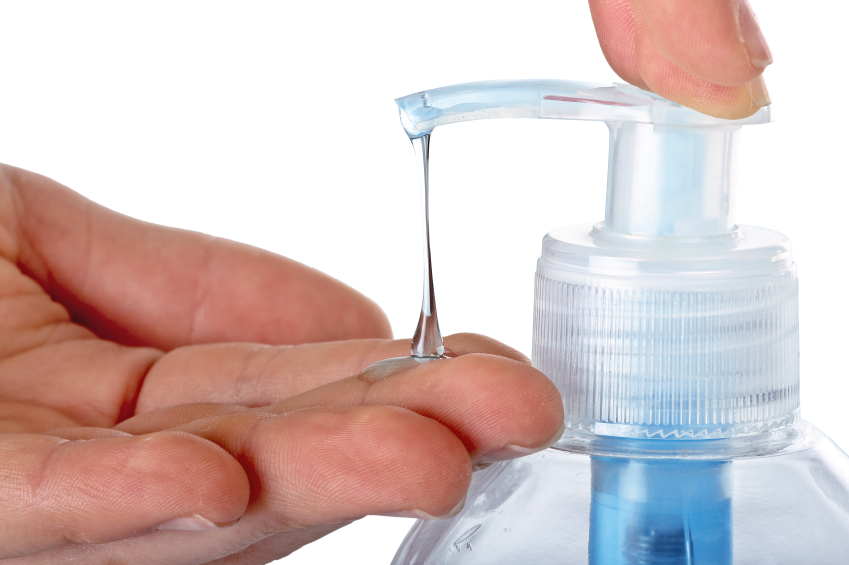Toxins are all around us. From air pollution to chlorinated pools… It’s hard to escape the chemicals in our environment. But even scarier than that? We may be exposed to even more of them in our homes. And the sooner you can identify them… The sooner you can start getting rid of them.
Here are five toxic cancer triggers hiding in your home.
1. Convenient but Deadly: You may be eating plenty of vitamin-rich green vegetables… But if they come from a can, you could be doing more harm than good. That’s because cans are lined with bisphenol-A (BPA). It’s an artificial estrogen. Once it invades your body, it wreaks havoc. It disrupts your natural hormone production. Studies show it may cause breast cancer tumors to grow.1
There’s an easy way to avoid this: Buy your fruits and vegetables from the fresh produce section. Or shop at your local farmer’s market. Just watch out for glass jars. The glass is BPA-free… But the lining on the lid usually isn’t.
2. Grab a Plate: Are there plastic food containers in your fridge? Most contain phthalates. These are chemicals used to make plastics easier to mold into shapes. They lower testosterone levels and increase estrogen levels…which may lead to breast or prostate cancer.2,3 They could be oozing into your food. Heating them in the microwave may only make matters worse—especially if the containers are old.4
So grab a ceramic plate to heat up your leftovers. And store anything you don’t finish in a glass container.
3. Cancer of the Sea: Omega-3s keep your eyes lubricated. They also help balance your cholesterol levels.5 Tuna is a great source… But eating too much cause a build-up of mercury.
This heavy metal is toxic to your nervous system, lungs, and kidneys…and causes tumors to grow in rats and mice.6 Albacore tuna in a can is one of the worst offenders.
You don’t have to ban fish from your kitchen. Just eat it fresh whenever you can. Before your next sushi dinner or grocery store visit, you can use the EWG’s seafood calculator.7 It tells you how much of each mercury-containing seafood is safe to eat.
4. Keep Off the Furniture: If your furniture is treated with a stain repellent, then it has perfluorinated compounds (PFCs) all over it. And it’s not just the furniture in your home… If your car interior has a water or stain-proof treatment, every drive you take could put you in danger. Exposure to these chemicals can disrupt your thyroid and hormone functions. Over time it may also raise your risk of developing cancer.8
Your best bet? Don’t get your furniture treated in the first place. If you already have, consider switching to something untreated.
5. Worse Than Dirty Hands: Antibacterial soap is everywhere. In your home, in your office… Most of it relies on triclosan. Sure, this chemical kills bacteria. But studies show it’s no more effective than regular soap.9 On top of that, it may create antimicrobial-resistant E. coli and salmonella bacteria.10 Animal studies show this chemical can cause liver cancer in mice.11
Triclosan is easy to avoid. The best way to do this is to look for it under the “active ingredients” of your bath products. Replace these with triclosan-free alternatives. When you leave the house, bring natural hand sanitizer with you.
It’s impossible to avoid all the carcinogens around us… But there are easy steps you can take to help reduce your cancer risk. They may seem small by themselves…but together they add up.
Remember… Fighting cancer isn’t just about removing dangerous triggers from your home. What you add is just as important.
Like a windowsill herb that makes cancer cells commit suicide… Or an “unhealthy” drink that slashes your risk of deadly prostate cancer by 60%. It even lowers your risk of skin cancer.
That’s just a glimpse of the everyday cancer fighters you’ll find right in your kitchen. And we put together a FREE report of the five most potent and easily accessible natural weapons. We’d like to send it to you now. Discover them all HERE.
In Good Health,

Angela Salerno
Publisher, INH Health Watch
Like this Article? Forward this article here or Share on Facebook.
References:
1http://www.sciencedaily.com/releases/2014/03/140306163359.htm
2http://www.nrdc.org/living/chemicalindex/phthalates.asp?gclid=CMnn4cHwuboCFQhgMgodM3kARQ
3http://www.ncbi.nlm.nih.gov/pubmed/22049059
4http://www.ncbi.nlm.nih.gov/pmc/articles/PMC3924457/
5http://www.ncbi.nlm.nih.gov/pubmed/23642375
6http://www.epa.gov/mercury/effects.htm
7http://www.ewg.org/research/ewg-s-consumer-guide-seafood/seafood-calculator
8http://www.everydayexposures.com/toxins/pfcs
9http://cid.oxfordjournals.org/content/45/Supplement_2/S137.long
10http://www.ncbi.nlm.nih.gov/pubmed/16922622
11http://www.washingtonpost.com/national/health-science/triclosan-found-in-antibacterial-soap-and-other-products-causes-cancer-in-mice/2014/11/24/096b8ca4-70cc-11e4-ad12-3734c461eab6_story.html

